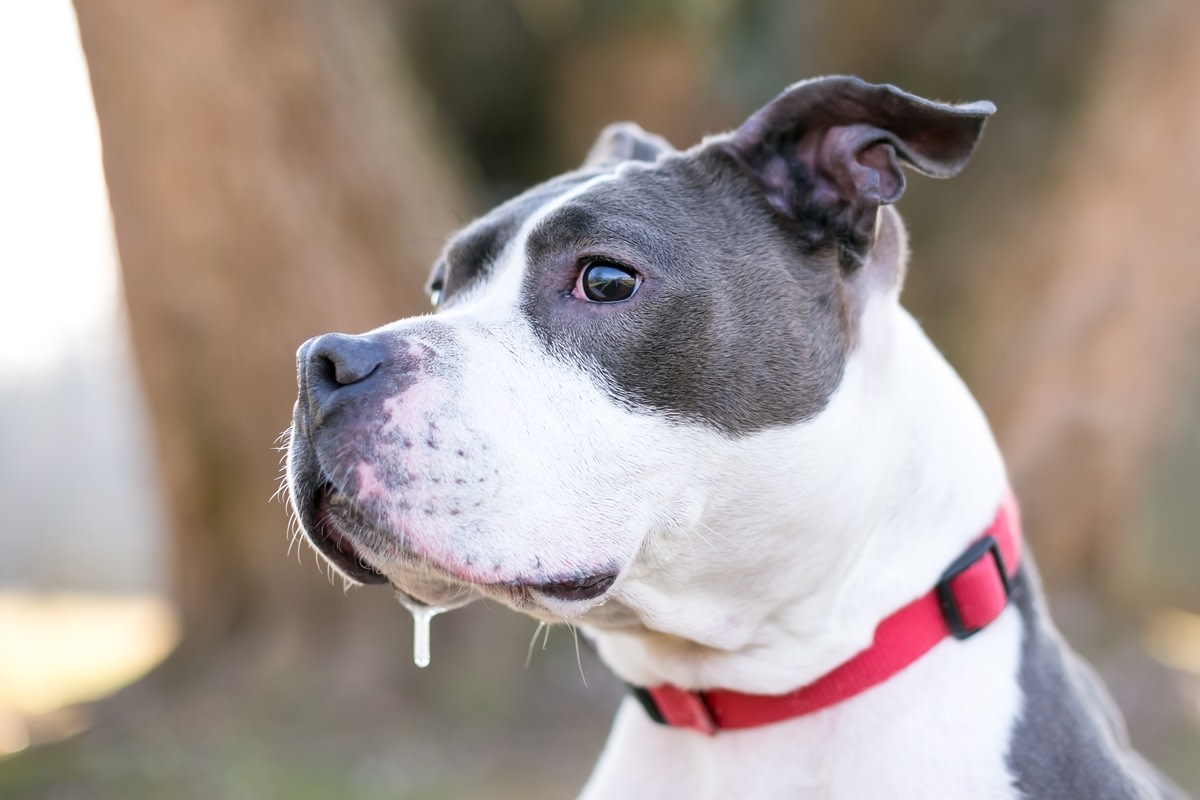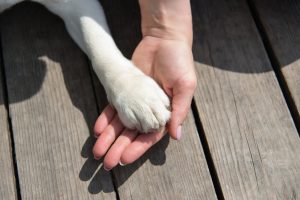
Can a Skin Disease Cause Excessive Drooling in Dogs?
Image via Mary Swift/Shutterstock
Why Is My Dog Excessively Drooling?
“My 16-year-old American Bulldog recently started drooling a thick drool. He also has several red open lesions on his stomach and groin area. He was seen by the vet, and they do not know why he is drooling and coughing. The did not give him an antibiotic because they were more concerned about the open lesions. He sees a dermatologist this week, but could the drooling and skin condition be related, and what could they be? He has always been a healthy dog. Please help! He is like one of my children. Thank you!” – Colette
Causes of Excessive Drooling in Dogs
Some of the most common causes of excessive drooling include:
- Oral lesions: An abscessed tooth, a tumor in the mouth, gingivitis
- Foreign body in the mouth: With an older dog it is usually a round bone that gets lodged between the teeth
- Nausea: Numerous infectious diseases will cause nausea.
- Heat stroke
- Poisoning
- Pain
Since he was seen by your local vet, they would have told you if he had any oral lesions that were causing the drooling. They also did a physical exam to look for any signs of poisoning or heat stroke. A possible cause of the drooling, therefore, is the pain from the ulcers on the stomach.
So yes, the drooling and the skin ulcers can definitely be related. Ulcers seen on the belly are usually caused by:
- Scratching: On the belly, I would most likely suspect a grass allergy or another contact allergy if he is an inside dog who spends his time on the carpet or couch. There are a lot of causes for scratching, however, so you will need to discuss them with your regular veterinarian or the veterinary dermatologist.
- Pyoderma: Even if he is not scratching excessively, a bacterial infection can cause open sores.
- Fungus: Although one of the lesions on the belly looks like it is infected secondary to scratching, just below that, another lesion looks similar to a ringworm infection.
If your dog is scratching a lot more often than normal, it is possible that these are infected excoriations secondary to scratching. He is kind of old for allergies to show up the first time, but it is not impossible, even if he has never had this problem.
Image via dog owner

Ringworm or Fungal Infection in Dogs
The other likely diagnosis is that he has a ringworm or other fungal infection, which can cause coughing and sometimes pain from lesions or a nasal infection. Over 50% of fungal infections are found in dogs less than a year old (1), but seniors with poor immunity sometimes contract this disease if they are exposed.
It is treatable, but you definitely want to look into the causes and examine any other pets in your house. I would normally recommend a topical antifungal to treat this, but you should put him on the oral medication (pills) if there is a chance that he is developing a fungal infection in his lungs.
Since you said that you are consulting a veterinary dermatologist about this, I would recommend waiting and letting them do a biopsy if necessary to determine if the cells in the lesions are just inflammatory or infected with bacteria, fungus, or there are cancer cells in the skin.
Did your vet suggest that they swab the skin to look for fungus? Did they prescribe any pain medication? Are you seeing any results?
If you did not have a veterinarian available, I would recommend a medicated bath instead of antibiotics. An antibacterial shampoo with chlorhexidine would be most appropriate. He would need the bath to be performed correctly. Here are instructions on how to give a medicated bath.
If your appointment is delayed and his skin is getting worse I would go ahead and start treating him for a fungal infection with a medicated antifungal shampoo. The coughing can only be treated systemically, however, so you will need to get those antifungal pills from your regular vet after the skin lesions have been swabbed or biopsied.
PetHelpful aims to feature only the best products and services. If you buy something via one of our links, we may earn a commission.
Sources
- Brilhante RS, Cavalcante CS, Soares-Junior FA, Cordeiro RA, Sidrim JJ, Rocha MF. High rate of Microsporum canis feline and canine dermatophytoses in Northeast Brazil: epidemiological and diagnostic features. Mycopathologia. 2003;156(4):303-8. doi: 10.1023/b:myco.0000003582.67122.69. PMID: 14682455. https://pubmed.ncbi.nlm.nih.gov/14682455/
This article is not meant to substitute for diagnosis, prognosis, treatment, prescription, or formal and individualized advice from your veterinarian. Animals exhibiting signs and symptoms of distress should be seen by a veterinarian immediately.
© 2024 Mark dos Anjos, DVM


